Tool Test: HEPA-rated shop vacuums
We test the Bosch VAC090AH, DeWalt DWV010, Fein Turbo II HEPA, Festool Cleantec CT 48 E HEPA, Makita VC4210L, Metabo HPT RP350YDH, and Milwaukee 8960-20.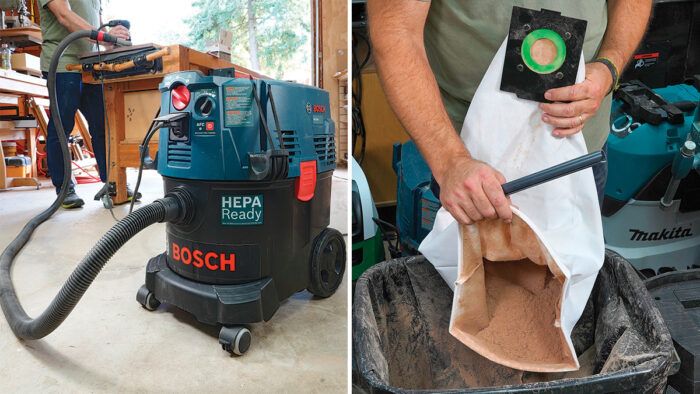
Synopsis: HEPA-level filtration has become the industry standard for dust-management equipment, as manufacturers strive to help us keep harmful fine dust out of our lungs. Asa Christiana took a head-to-head look at shop vacuums with HEPA-rated filters, simulating tough working conditions that produce clouds of dust. He looked at vacuums in the 8- to 11-gal. range.
Models tested include the Bosch VAC090AH, DeWalt DWV010, Fein Turbo II HEPA, Festool Cleantec CT 48 E HEPA (smaller versions were not available for this test), Makita VC4210L, Metabo HPT RP350YDH, Milwaukee 8960-20.
Every woodworker needs a shop vacuum, trailing behind their portable power tools like a loyal pup, and helping with cleanup. Shop vacuums don’t move enough air (measured in cubic feet per minute, or CFM) to handle big chip producers like tablesaws, jointers, and planers, but what they lack in volume they make up in suction power and portability.
Over the past few years, as we’ve learned more about the danger of very fine dust—the kind that hangs longest in the air and penetrates deepest into the lungs— HEPA-level filtration has become the industry standard for dust-management equipment. While fine filtration might not matter as much on a job site, it matters a lot in the closed environment of your woodshop.
Manufacturers of shop vacuums (aka “dust extractors”) have responded by adding HEPA-rated filters. Adding these fine filters is not as easy as it might seem, as they are more prone to clogging, which can cut suction power drastically. To prevent clogging, manufacturers recommend using a fleece collection bag that acts as a pre-filter, capturing most of the fine dust before it reaches the HEPA filter unit.

Another defense against clogging is an automatic filter-cleaning mechanism, which reverses the pressure in short bursts to dislodge caked dust.
Today’s top vacuums also include an onboard outlet for portable power tools, connected to a tool-triggered power switch, which turns on the vacuum when you turn on the tool and keeps it running for a bit after you’re done. These are super convenient, letting you park the vacuum near your chopsaw, for example, without having to lean over to switch it on and off.
These new standards and expectations have launched a wave of new products, so we decided to take a close look at HEPA-rated vacuums, head to head. Some manufacturers offer a variety of HEPA models in various sizes, so we picked one from each brand, in an 8-gal. to 11-gal. size that offers the best combination of capacity and portability.
That target range worked well, with one exception. Due to supply-chain disruptions, Festool was not able to provide the models we requested, so we had to go with their 12.7-gal. Cleantec CT 48 E AC HEPA, a larger and pricier model than we were shooting for. But the CT 48’s motor and airflow stats are identical to those of the CT 26 and CT 36, for example, so other than tank/bag capacity, you can expect Festool’s smaller models to perform similarly.
Tough tests and precise results
Armed with a gauge that measures static pressure, I put seven models through a series of tough tests, designed to simulate the worst conditions they might face in a typical shop. The gauge measures suction in inches of water, which represents how far the vac would pull water up a vertical tube—a standard test. For these pressure tests, I used the largest hose-end provided with the vacuum, to make sure I wasn’t throttling it down unnecessarily.
To simulate the most challenging working conditions, I needed a source for very fine dust, so I turned to a large millwork shop here in Portland—Creative Woodworking NW—where the friendly owners were happy to contribute bags of consistently feathery dust captured directly from their wide-belt sander.
To establish a baseline, I loaded a new fleece bag in each vacuum and took a power reading. Initial power varies significantly, as you can see in the chart. Then I tested the vacuums with their bags mostly full, to see if suction power was compromised.


Capacity is lower than stated
I noticed right away that the HEPA filter units extend down into the tank area on most vacuums, stealing potential bag capacity. So I measured effective bag capacity by filling up each one—measuring the volume of dust with a bucket as I fed it into the hose—until the vacuum clogged and lost power.
On all vacs but the Festool, working bag capacities were relatively low compared to stated tank capacities. My guess is that most of the manufacturers are using the same capacity numbers calculated before the HEPA filter units were added.
Working power
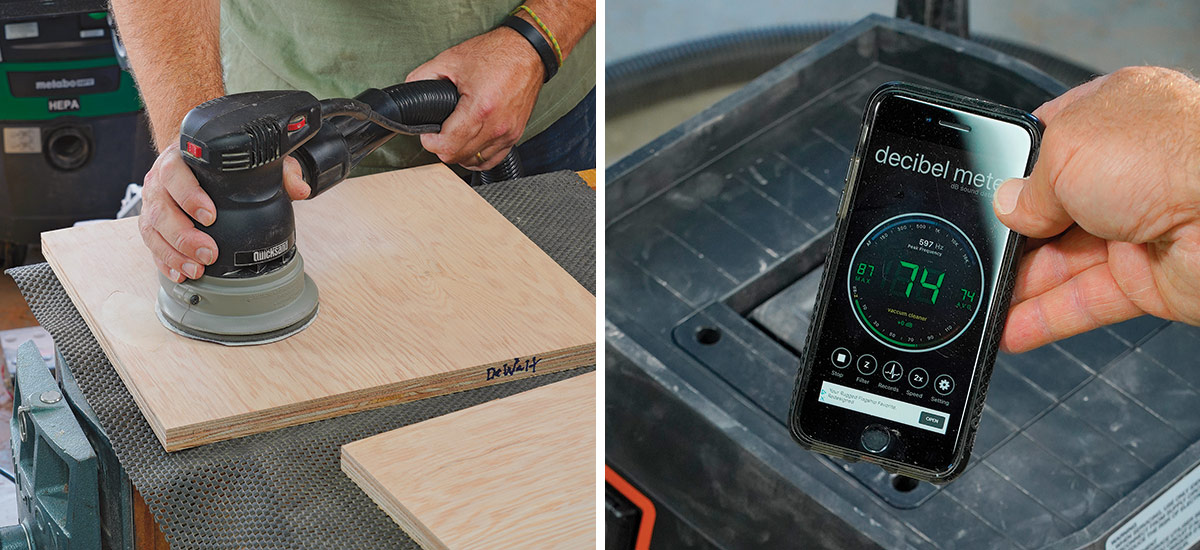
Knowing now what each fleece bag could actually hold, I loaded new ones into each vacuum, sucked up enough fine dust to fill each to two-thirds of its working capacity, and took another static-pressure reading at the end of the hose. I repeated this test twice to see if I could get any fine dust past the filter bags and into the HEPA filters, and also to be sure my numbers were solid. The pressure drop was negligible on all models, telling me that the fleece bags do exactly what they are intended to do: prevent fine dust from clogging the HEPA filters.
As for automatic filter-cleaning, all the vacs have it except the Fein, but it doesn’t have a measurable effect on vacuum power when the fleece bags are used.
To make sure I wasn’t relying only on my vacuum gauge for testing power and efficiency, I tried a real-world sanding test. With each bag two-thirds full, I hooked up my random-orbit sander, sanding a fresh plywood square with a fresh 80-grit disk for four minutes. In all cases, even with the relatively weak DeWalt, there was almost zero dust left on the plywood.

Connecting a tool doesn’t hurt power
Next I looked for pressure drop when a tool is connected to the onboard outlet. Connecting my sander had zero effect on my pressure readings, so I tried my power-hungry chopsaw, which lowered the pressure readings only 3% to 4% at most—a negligible amount.
Reusable bags offer savings
While the disposable fleece bags do their job extremely well, they fill relatively quickly in a busy shop and they aren’t cheap, adding a significant operating cost. And if you are thinking about shaking the dust out and reusing them, it’s a messy, time-consuming endeavor. As for using these HEPA vacuums without their bags, it’s not recommended for fine wood dust, due to the high potential for filter clogging.
Luckily, there are reusable filter bags available to fit all models, and less expensive aftermarket models available online.
A few other factors
As for mobility, the Fein stood out with its compact footprint and four swiveling wheels. The others go with the cart approach (two fixed and two swivel casters). All but the Bosch and DeWalt vacuums have brakes of some kind. Festool’s single, centralized brake was much easier to activate than the wheel brakes on others. Last but not least, there is the noise. I used a couple of smart-phone apps to compare noise levels, making sure numbers were consistent. Fein was significantly quieter than its competitors, measured on the logarithmic decibel scale.
A few models stand out
The clear winner here is Festool’s CT 48 Dust Extractor. It has amazing capacity relative to its size, and unmatched suction power. It packs in a number of subtle but very helpful design touches, like a clever foot brake and easy hose and cord storage. The model we tested is pricey, but you don’t really need its automatic filter cleaning device when you use filter bags, so I would go with the CT 48 E HEPA ($840), or save even more with a smaller model like the CT 26 or 36, which have the same suction numbers but lower bag capacities. The Festool CT 26 E HEPA offers 6.3 gal. of capacity, for example, and costs $740.
Best Overall HEPA-rated Shop Vacuum
Festool Cleantec CT 26 E HEPA Dust Extractor
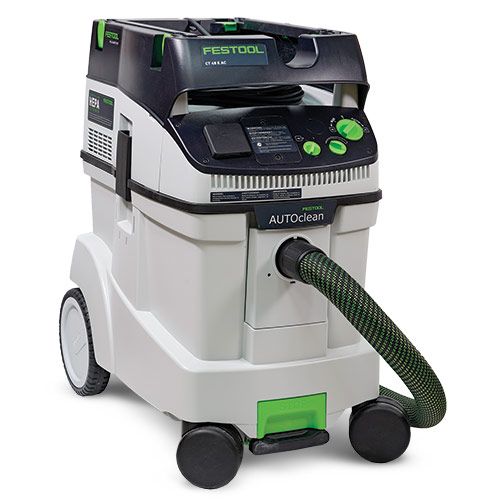
In the value category, it’s hard to beat Fein’s Turbo II. While it lacks the capacity of some, it almost matched Festool’s power readings. I also like how quiet, compact, and nimble the Fein is, and the secure resting spot on top for my sander.
Best Value HEPA-rated Shop Vacuum
Fein Turbo II HEPA Wet/Dry Dust Extractor
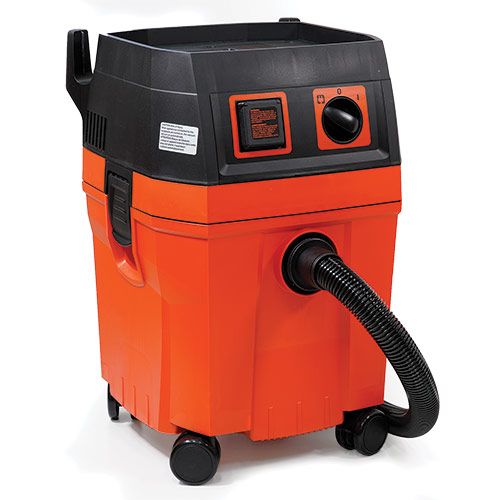
Bosch and Makita also earned Best Value honors. Between the two, Makita wins on capacity and hose adapters and Bosch wins on price and power.
Best Value HEPA-rated Shop Vacuum
Makita VC4210L HEPA Wet/Dry Dust Extractor

Best Value HEPA-rated Shop Vacuum
Bosch VAC090AH HEPA Dust Extractor
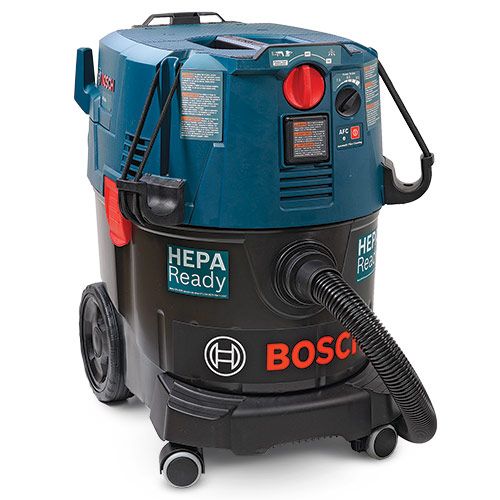
Asa Christiana is a former FWW editor who builds, teaches, writes, and shoots photos in Portland, Ore.
To view the entire article, please click the View PDF button below.
From Fine Woodworking #293
DeWalt DWV010 HEPA Dust Extractor
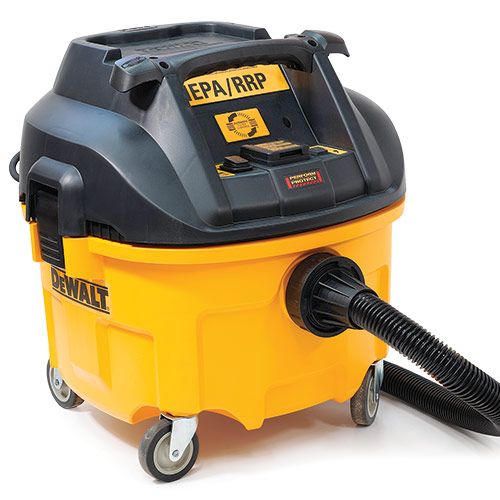
Metabo HPT RP350YDH HEPA Dust Extractor
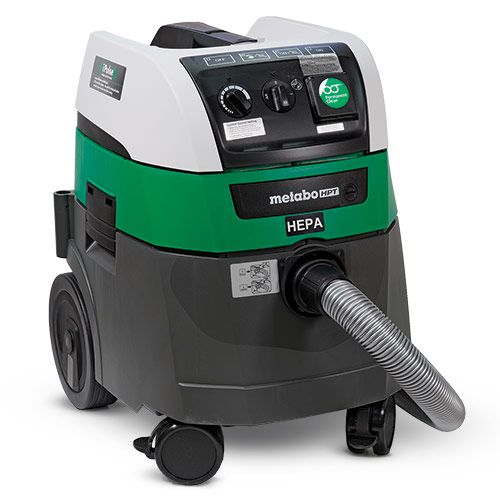
Milwaukee HEPA Dust Extractor
Milwaukee 8960-20 HEPA Dust Extractor







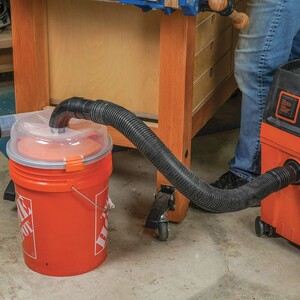
















Comments
This is useful testing, and thank you for taking the time and effort to perform these tests and analysis.
There is one aspect that I feel would be worth adding to this round of testing, and that is an analysis of the effectiveness of each unit in terms of particles left in the atmosphere after performing a set task.
I would suggest a closed shop, each test performed one day apart to allow any fine dust to settle, and take a reading from an air particle analyser before and after performing a set task (e.g. sanding a piece of timber for 10 minutes).
Of course, we all know what each manufacturer claims their unit can do, and will give a technical specification of their HEPA filter, but this doesn't take into account the effectiveness of the unit at actually performing extraction on a sander (or other tool), the "leakiness" of their vacuum, and other factors that play into effective dust extraction.
Asa,
Thanks much for the review....v. useful, as usual.
Can I ask where you found the aftermarket reusable fabric bag? [for ~35 as I recall]. All I found was the rather expensive one from Bosch, I think.
Yes, thanks for the informative review. =
I, too, would ask where you found the reusable aftermarket bag?
Thanks
Log in or create an account to post a comment.
Sign up Log in